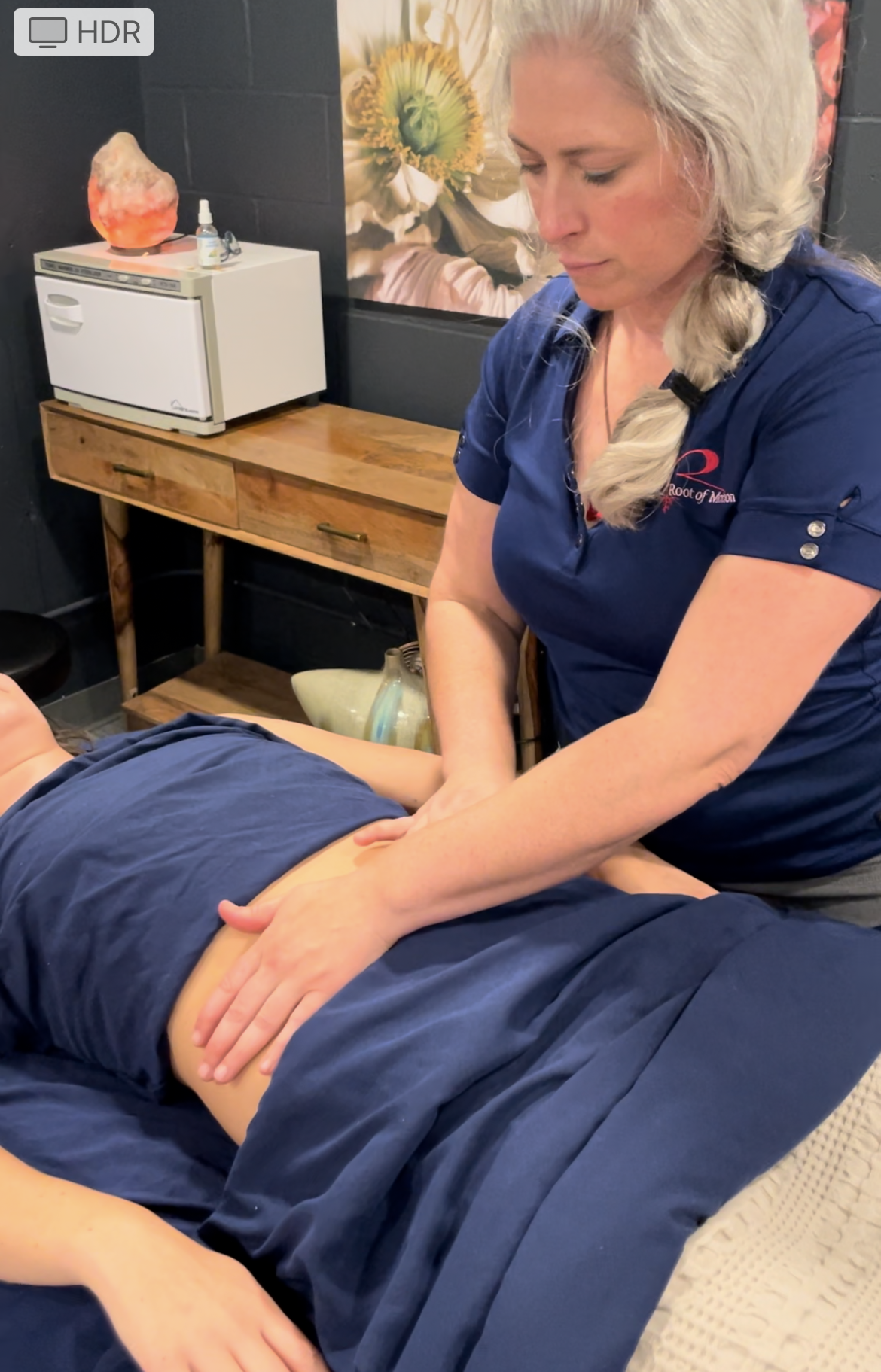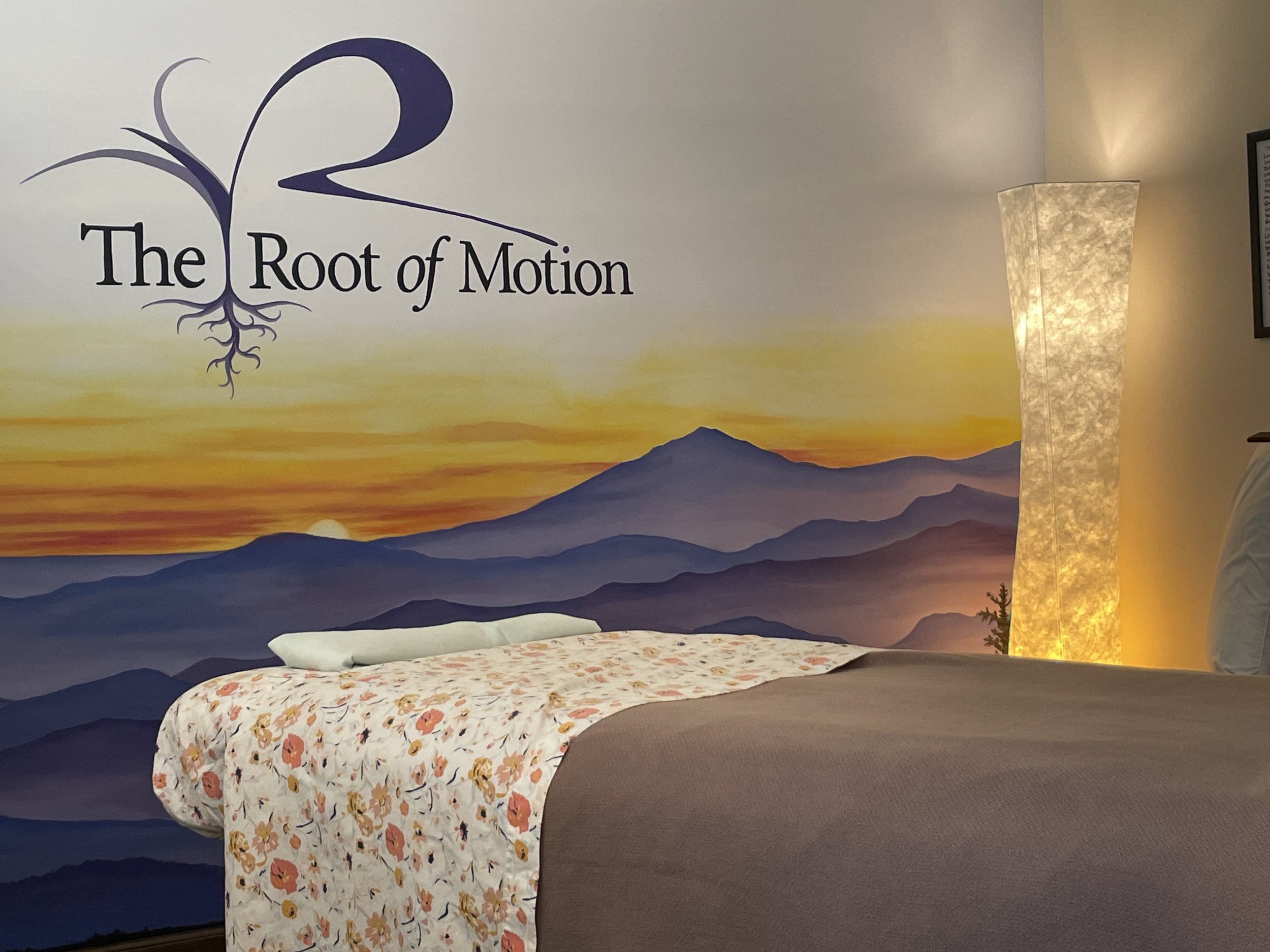Our goal at The Root of Motion is to enhance our client’s quality of life by providing treatments that identify and correct all muscle-related obstacles and decrease inflammation, tension, and stresses on and in the body using MAT, MATRx, massage, and manual lymphatic drainage (MLD). We offer the most nurturing environment and treatments to empower you to move in your life. We treat all ages and specialize in neck, back, hips, shoulders, wrists, hands, knees, and feet.
Muscle Activation Techniques (MAT) and MATRx
Muscles move bones and joints. MAT ensures the brain and muscles, the neuromuscular system, work the best by engaging each muscle's ability to show up and tolerate forces so our body can handle the stresses powerfully, without pain or pause.
The “how” of MAT work is like the ABCs of language. The letters create the word to make the meaning, just as the muscles generate the motion.
Without som of th lttrs, you may still gt th gist of what is being writtn, but the read is awkward and interpretation can vary.
You can still move without all your muscles showing up, but the motion will not be as smooth and powerful and perhaps unstable and uncomfortable.
The brain orchestrates motion by making muscles contract to move, hold to stabilize, or relax to allow other motions to occur.
This orchestration is a neuromuscular function between the brain and the muscles, creating a flow of information between them. When this communication breaks down due to stress or overuse, information exchange gets messy, creating the need for compensation and backup plans, which is felt as tightness.
Think of how an ankle injury changes the way you walk. When your brain senses instability, it redirects forces, limiting motion and force through the damaged tissues. It creates tightness in other muscles and pulls you in another direction away from the ankle. These compensations are designed to recreate stability and protection. They often cause chronic tightness, pulling your bones out of alignment and creating tiring and uncomfortable motion.
MAT and MATRx create a better flow of information. By first observing your range of motion, we can identify and correct muscle imbalances, restore muscle function and neuromuscular communication, and improve the root of your motion.
We address the muscles in your body that could be missing their cue, affecting your comfort and making your motion feel less than fluid in motion or fatigued. Issues well-suited to this therapy include: Rotator cuff injuries and Frozen Shoulder, Osgood-Schlatter’s Disease or Sever’s Disease, Tennis and Golf Elbow, IT Band Syndrome, Patella Tracking, Degenerative Disc Disease, Spine Instability, Excessive or limited pronation or supination, Plantar Fasciitis, Tendonitis, Piriformis Syndrome, Wrist and hand (compressions, grip and pain).
Manual Lymphatic Drainage (MLD)
Do you feel puffy or sluggish? Have you been inactive or sick lately? Are you having a difficult time sleeping or thinking?
Manual Lymphatic Drainage (MLD) is a simple yet effective technique that could be one of the keys to unlocking your best health. It helps create better circulation with inactivity and immobility. MLD even helps with too much motion by accelerating the body's ability to heal and feel well.
Unlike other massage and bodywork, MLD uses shallow pressure with a stretch and rebound motion.
MLD mimics the pumping action of muscles. It's a gentle, non-invasive way to support your lymphatic system.
For more information, check out the article below.
Relaxing and Connective Massage
Are you stressed out and holding some of that in your muscles? Many of us are. A relaxing and connective massage melts the tension built up in your body from all the “To-Do’s”, and you can let go and let the healing begin while aligning you with being in the moment.
There are so many ways we mentally carry what is occurring in our lives, and it leaves a residue in our body whereby our muscles are also holding onto the tension of life. In this space, tension melts naturally; you hit the reset button and acquire the pause to slow down, heal, and pivot from stress.
About Your Practitioner
Rachael Durnell is a MATRx practitioner in St. Louis, Missouri. She has specialized in Muscle Activation Techniques (MAT) since May 2007.
In 2003, she earned a B.S. in Nutrition and Fitness and a minor in Psychology from the University of MO-Columbia. She was introduced to the MAT process as a personal trainer in Chicago in 2003 and began he studies in 2006. In 2010, she obtained NCTMB certification for bodywork and massage therapy. In addition to MAT and massage, she has received the following: ACSM, AFAA, ACE, and NASM certifications.




